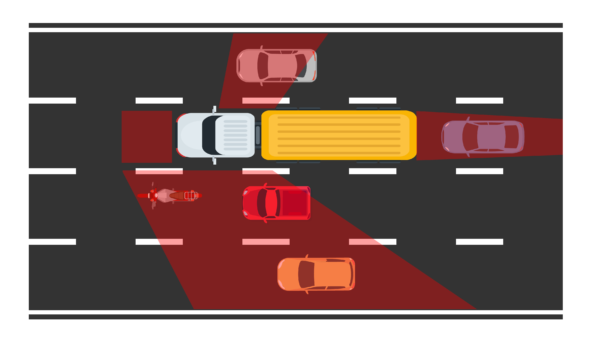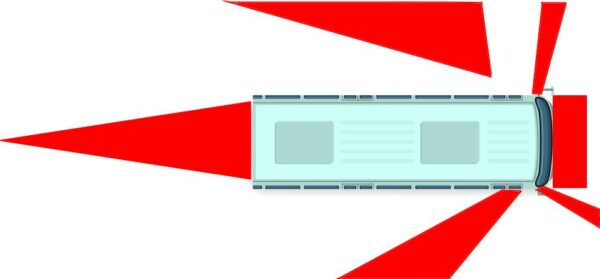A blind spot is anywhere around the vehicle that the driver cannot see within the normal range of motion of their head, or by looking in the mirrors. Modern vehicles are gradually reducing blind spots for drivers by the inclusion of better mirrors, camera and bigger windows, but there’s a limit to how much they can be reduced.
The type of road user to be most affected by a blind spot is a cyclist. Motorcyclists are the next most vulnerable. The reason is because they offer a small size plus the ability to travel at reasonable speed, making it difficult for a driver to track their position. Even a small box van can be easily in the blind spot of an articulated lorry, especially if the driver has not set the mirrors well.
It’s hard for drivers that have never driven a bus or lorry to understand just how large the blind spots are, and this means they sometimes drive in the blind spots without realising.
Images showing blind spots around lorries and buses
There are blind spots all around the vehicle.




The red shaded area represents the approximate blind spots. Of course, the height isn’t shown, so low vehicles such as sports cars can be even less visible.
A blind spot also exists just above the cab, making it difficult for the driver to understand when they are in danger of hitting low-hanging branches and awnings.
